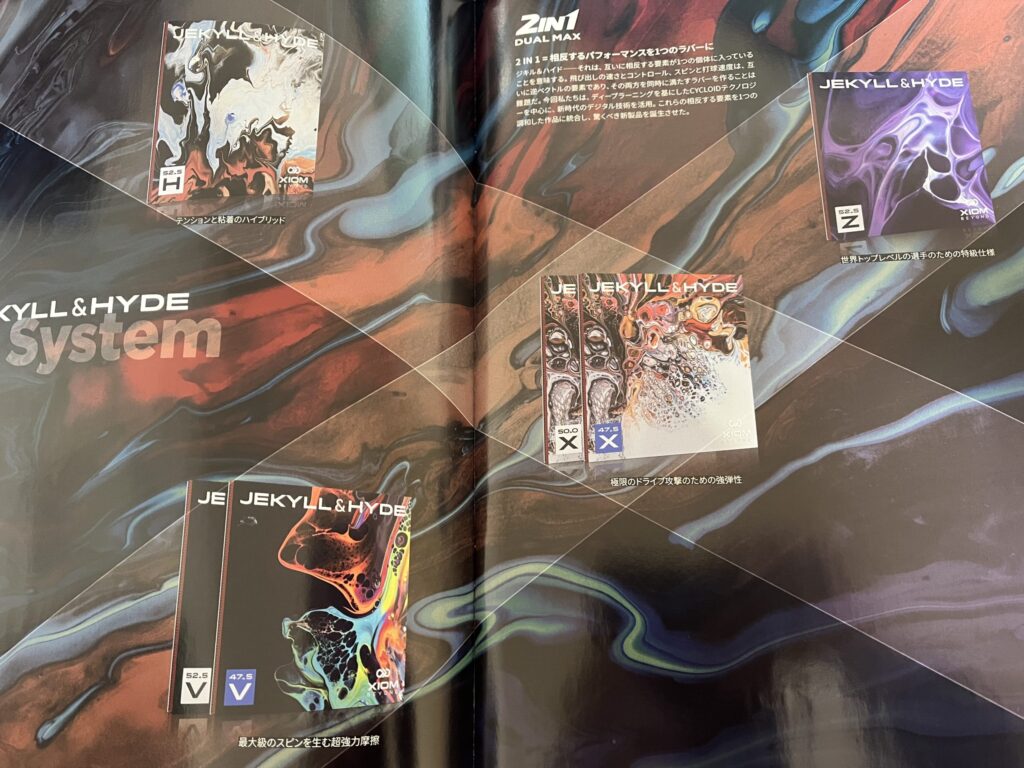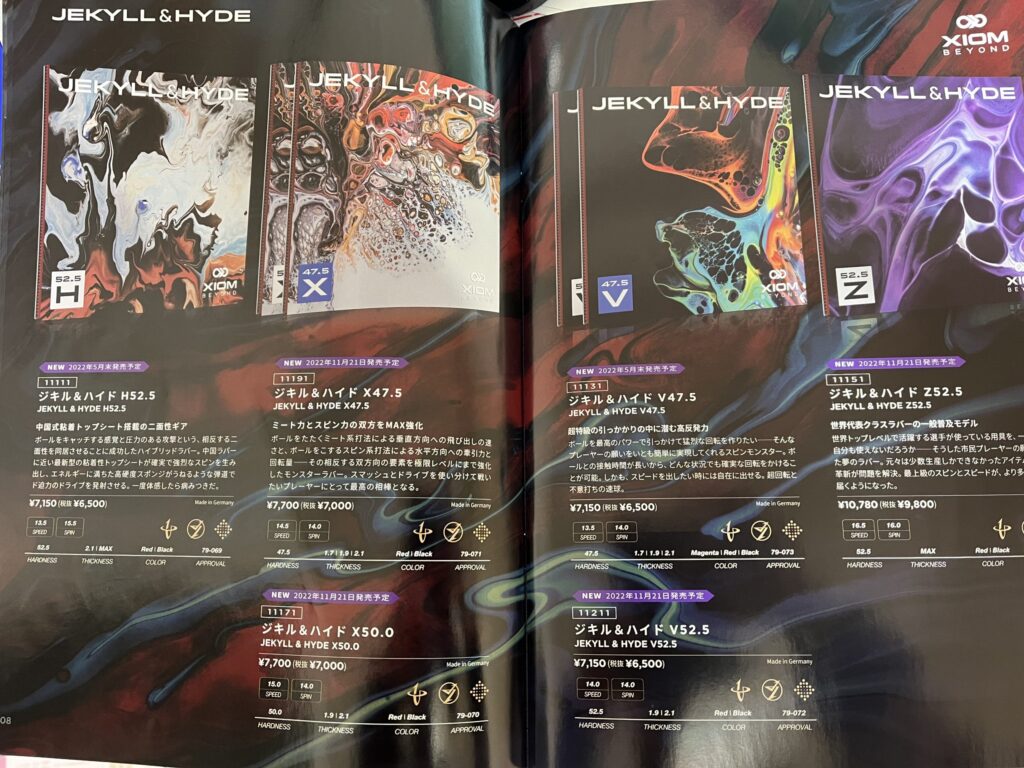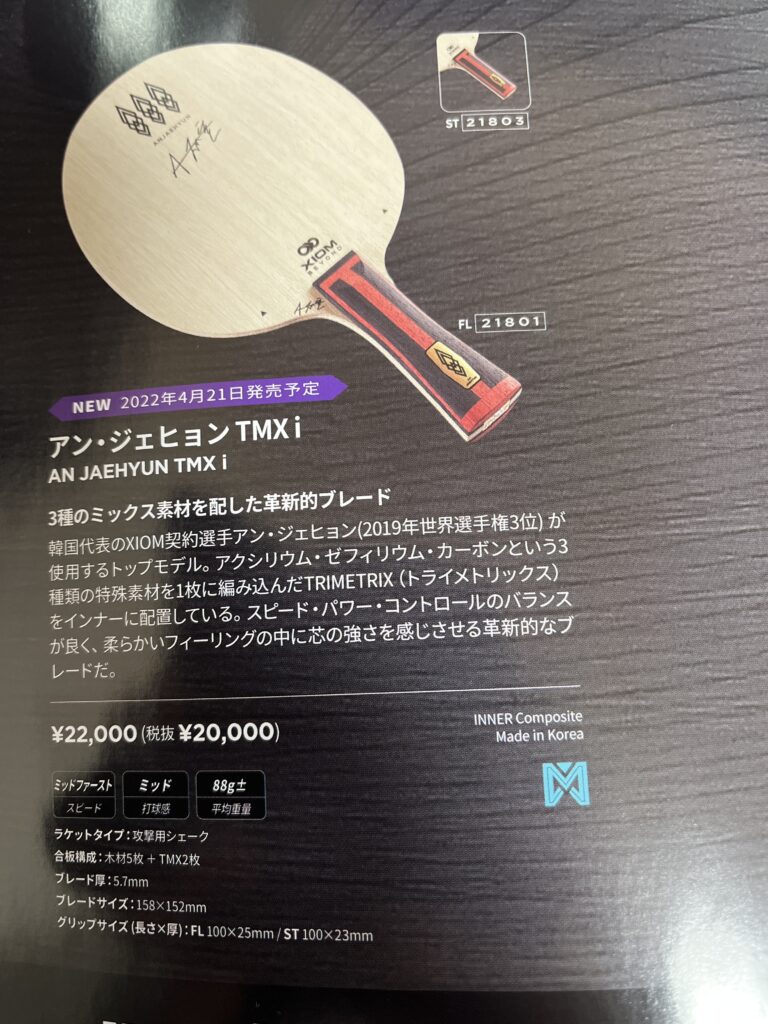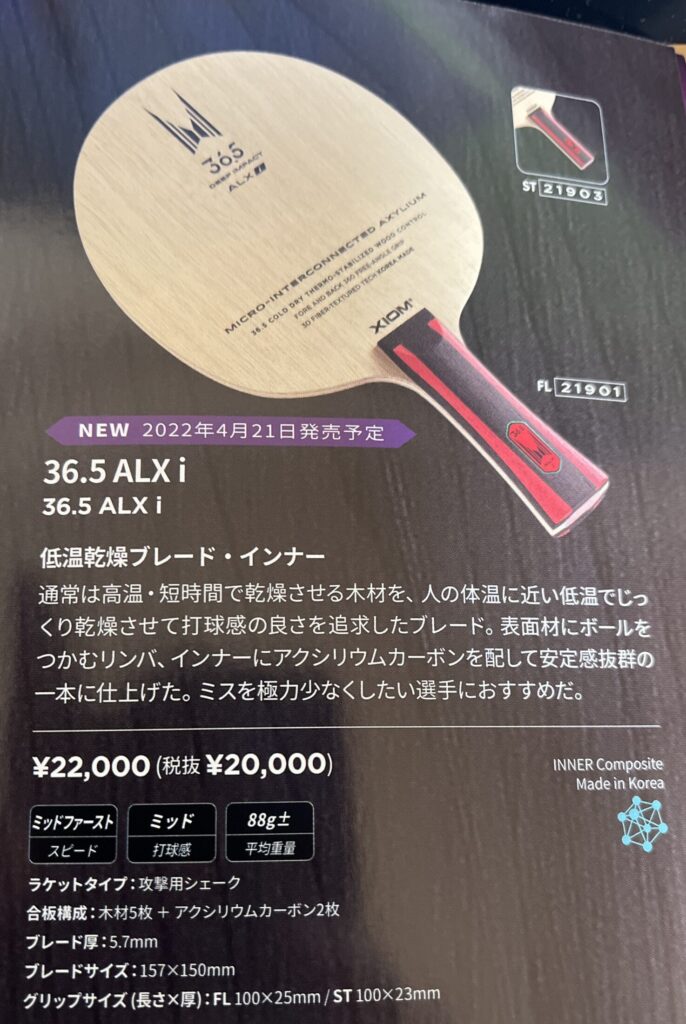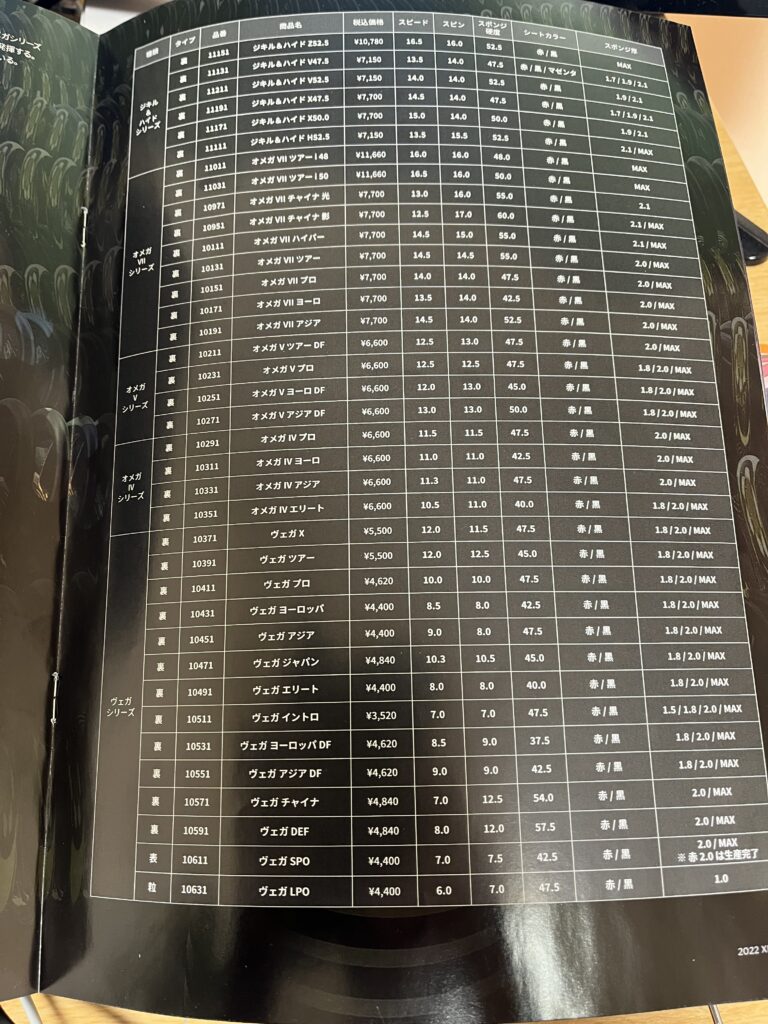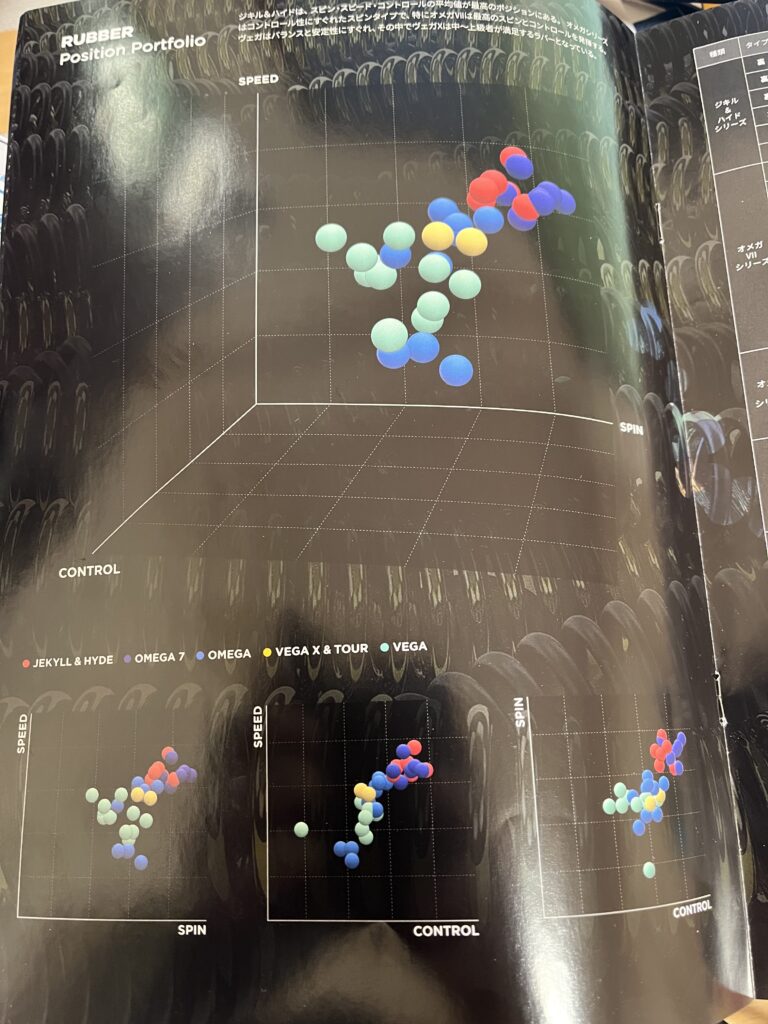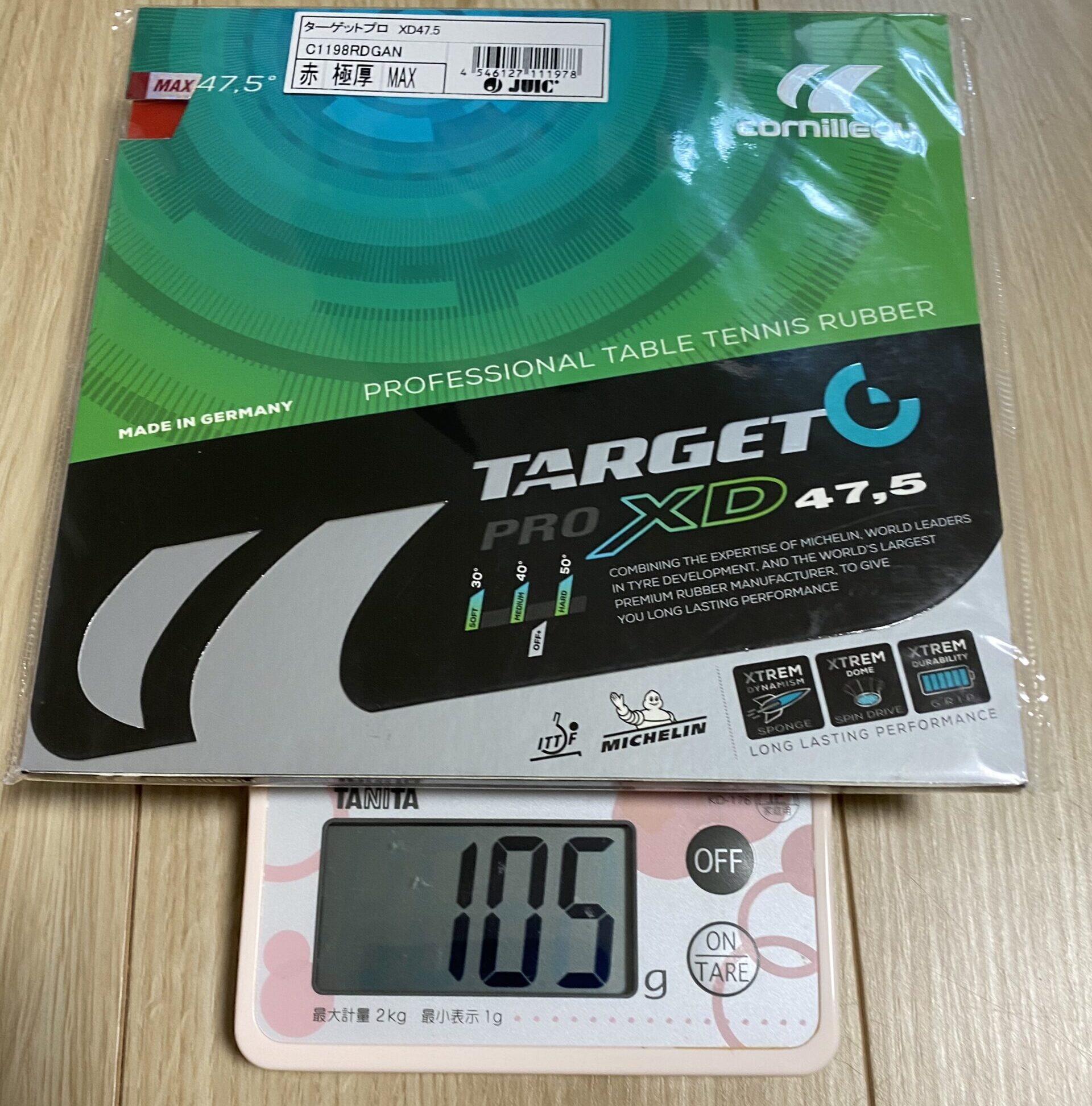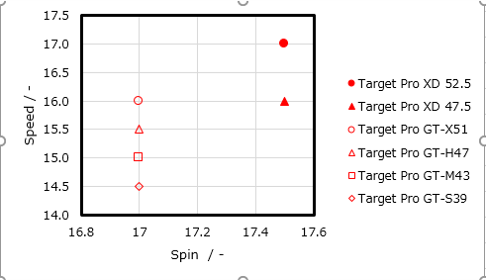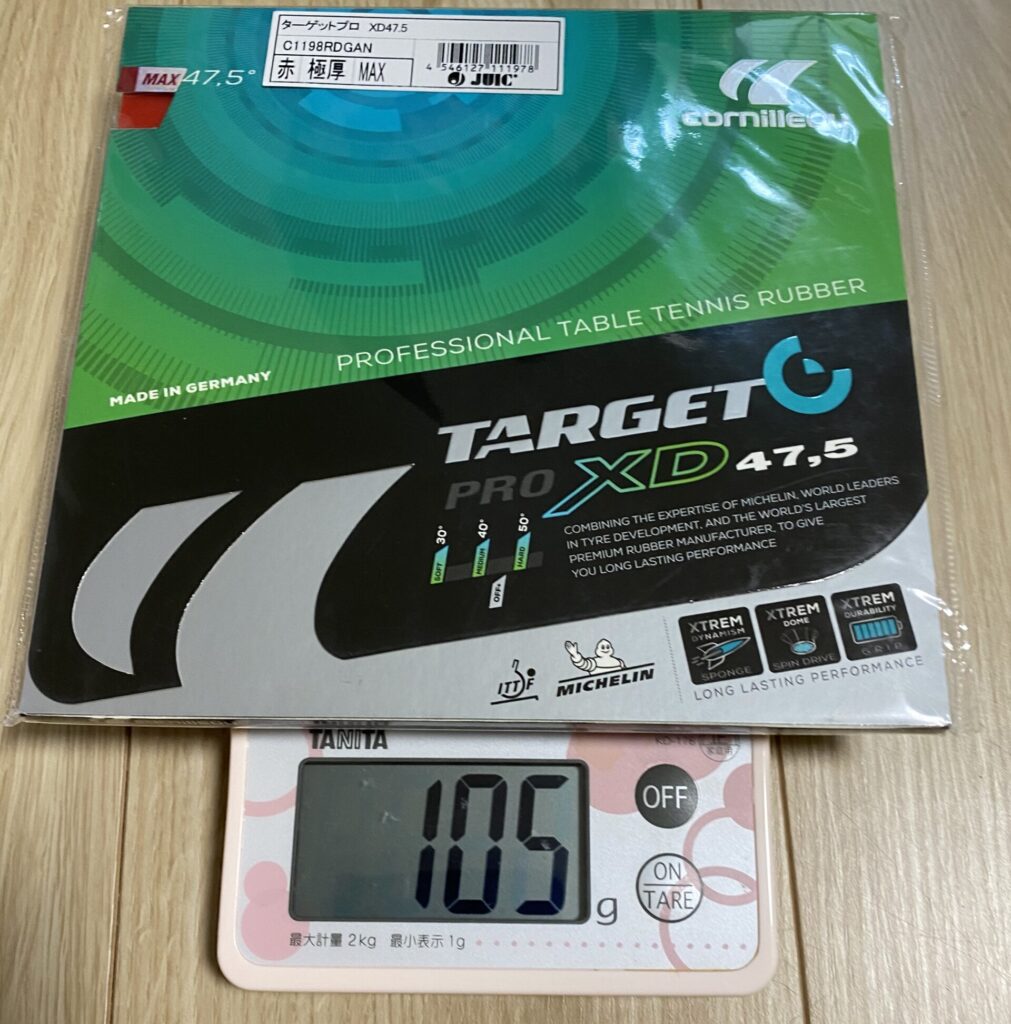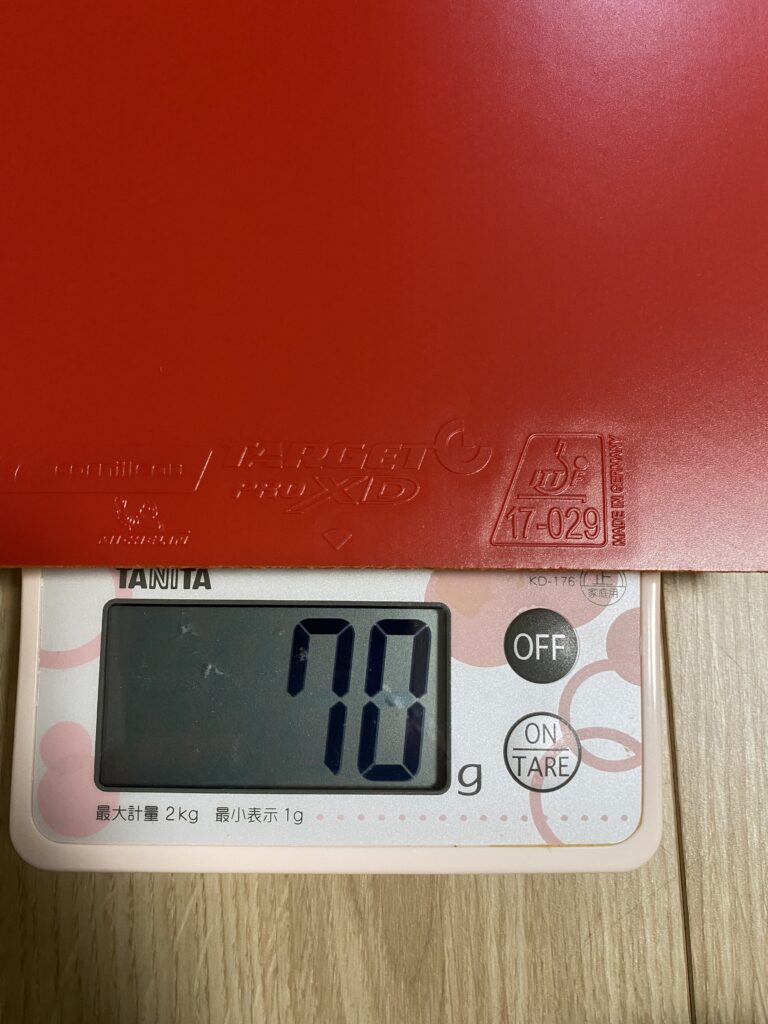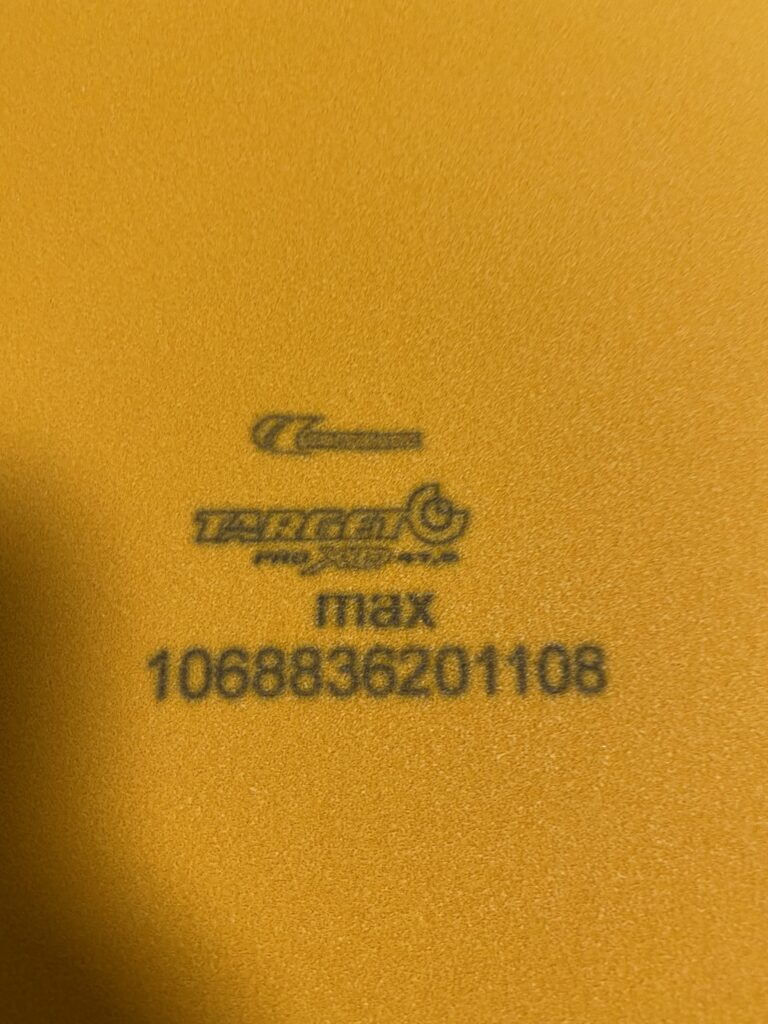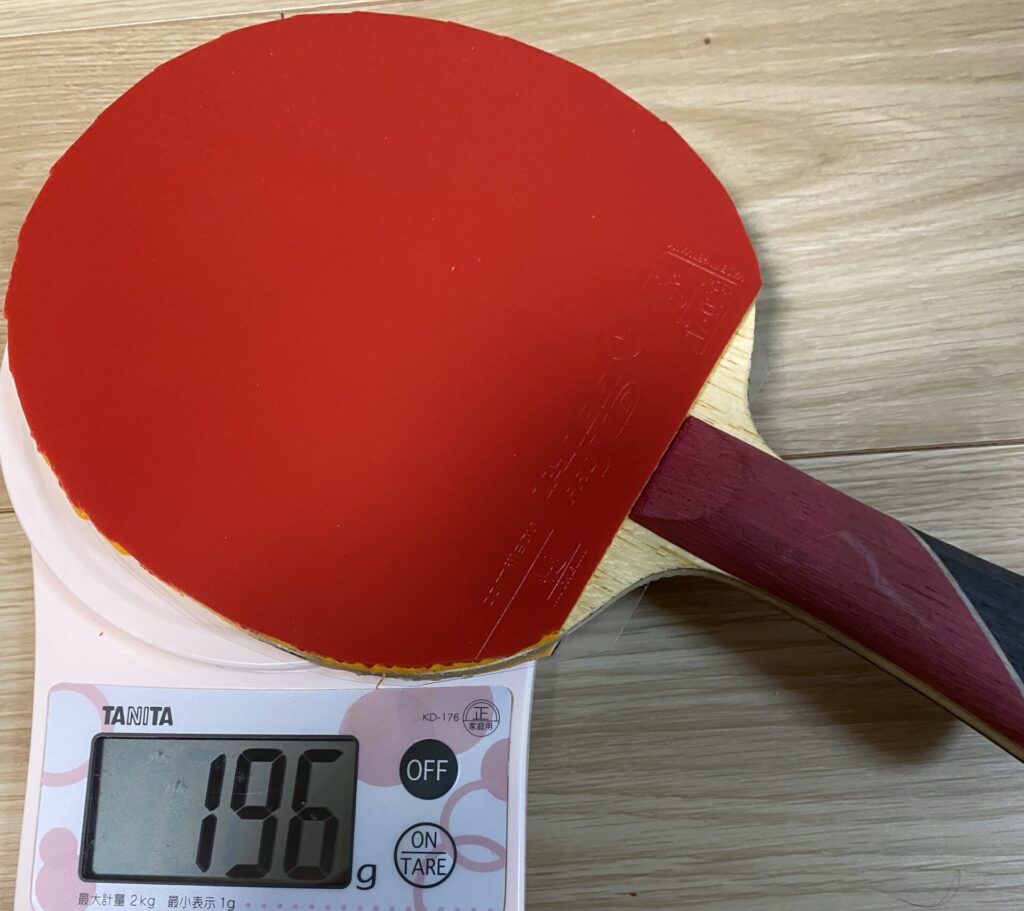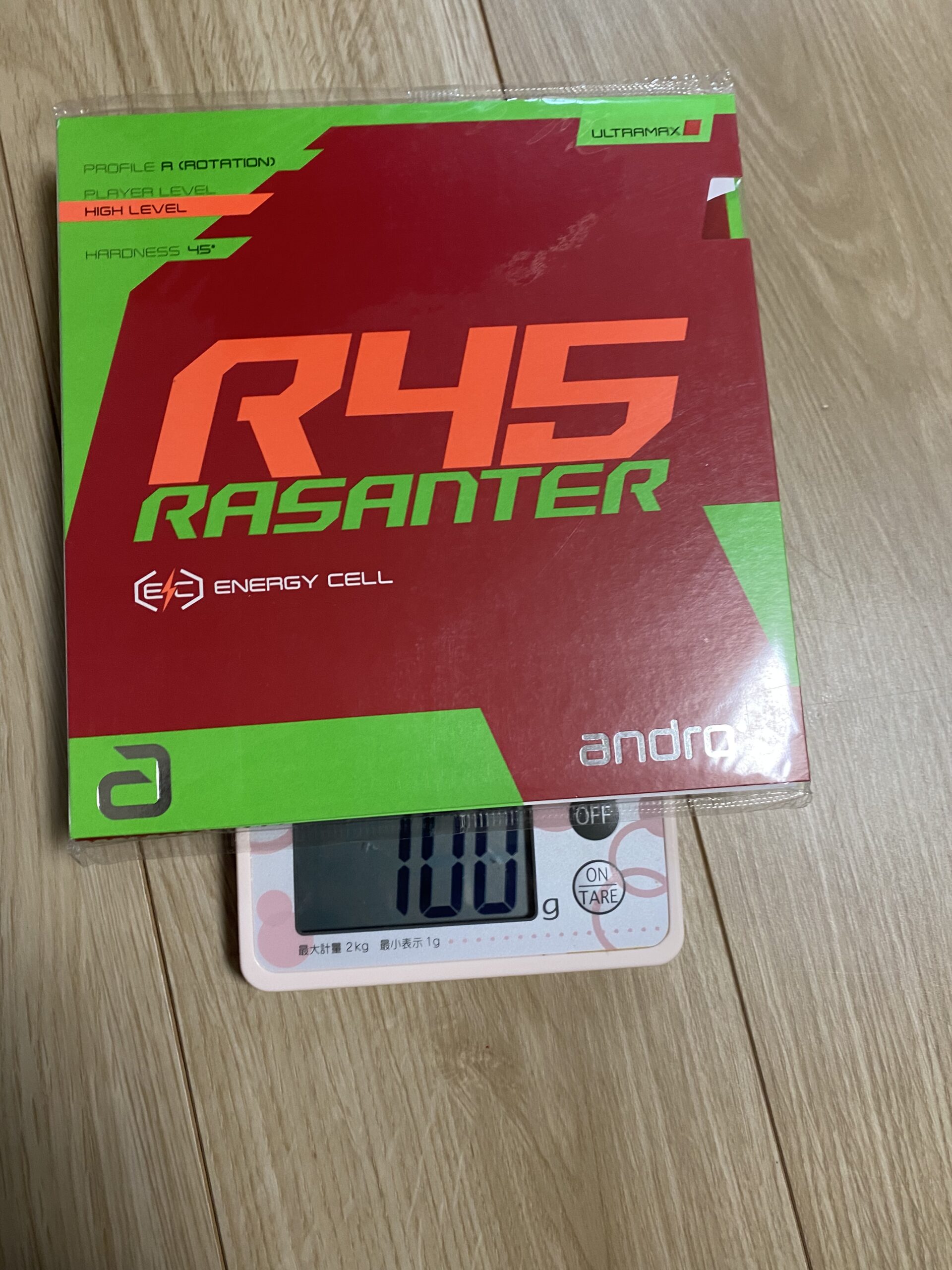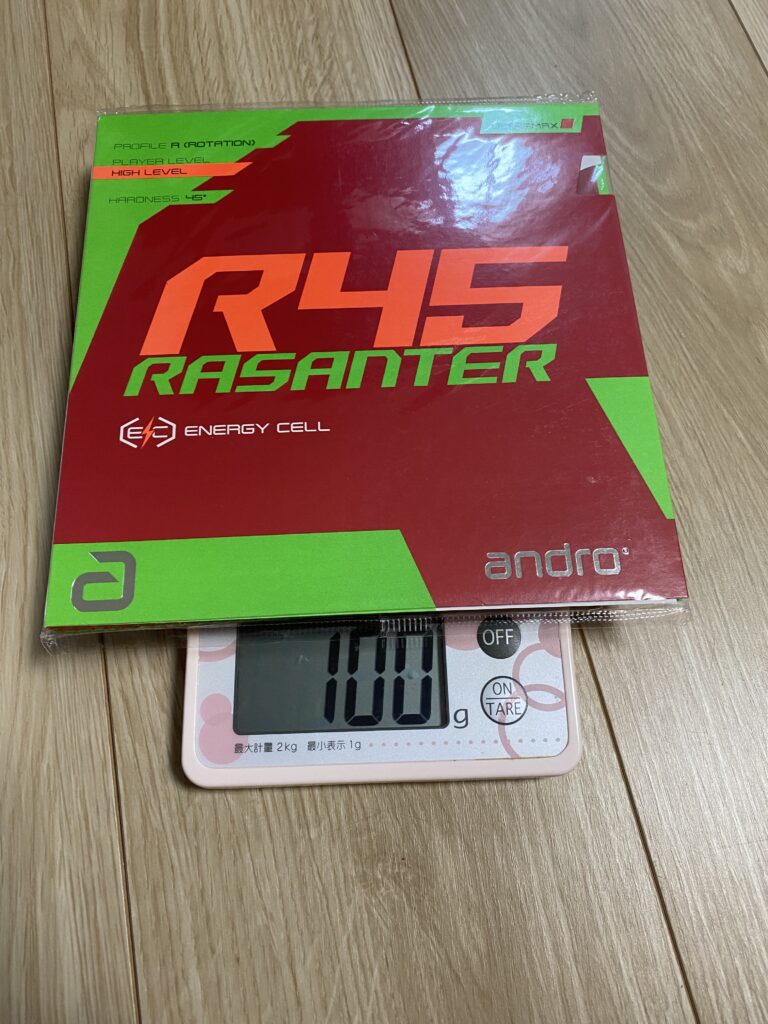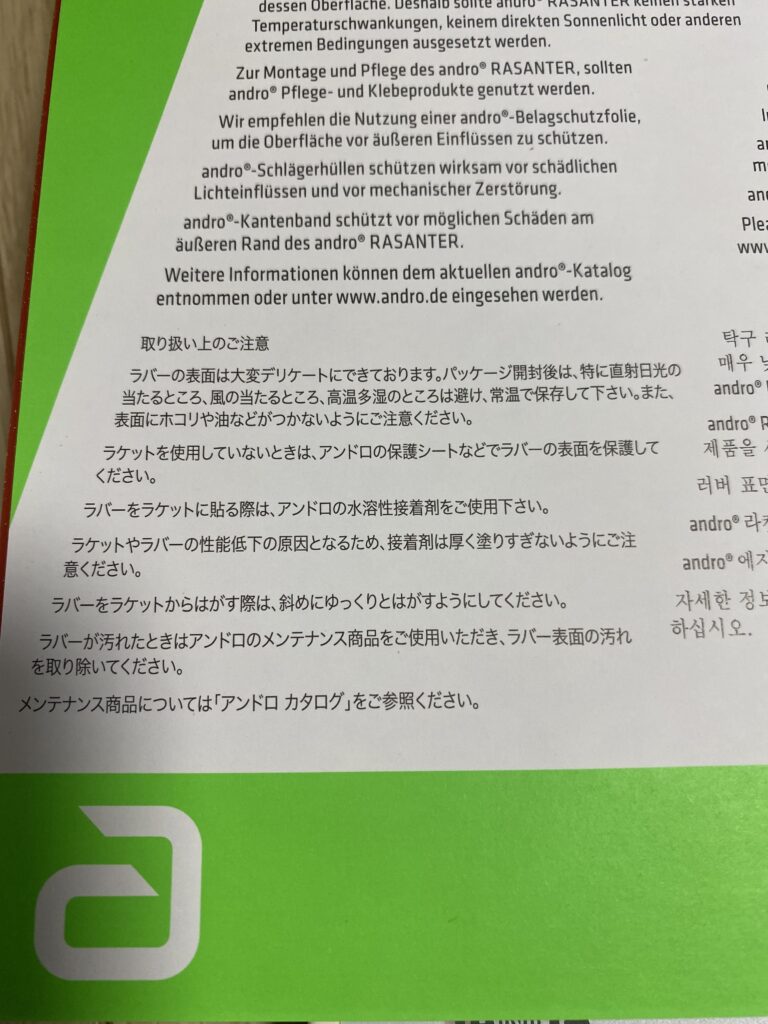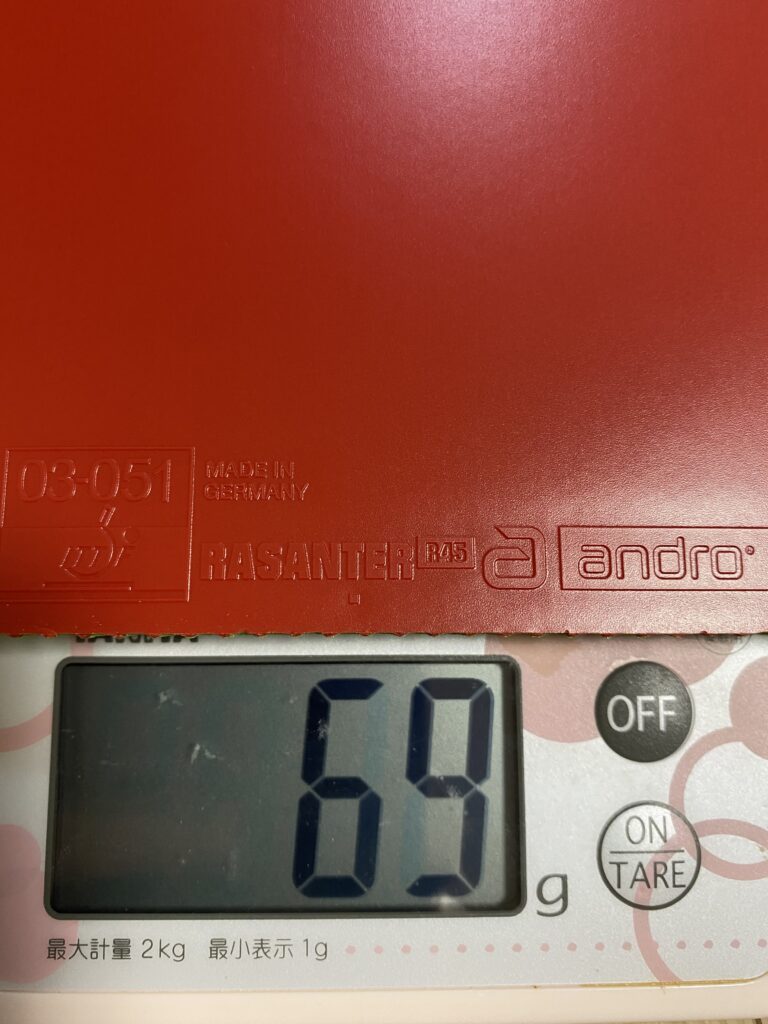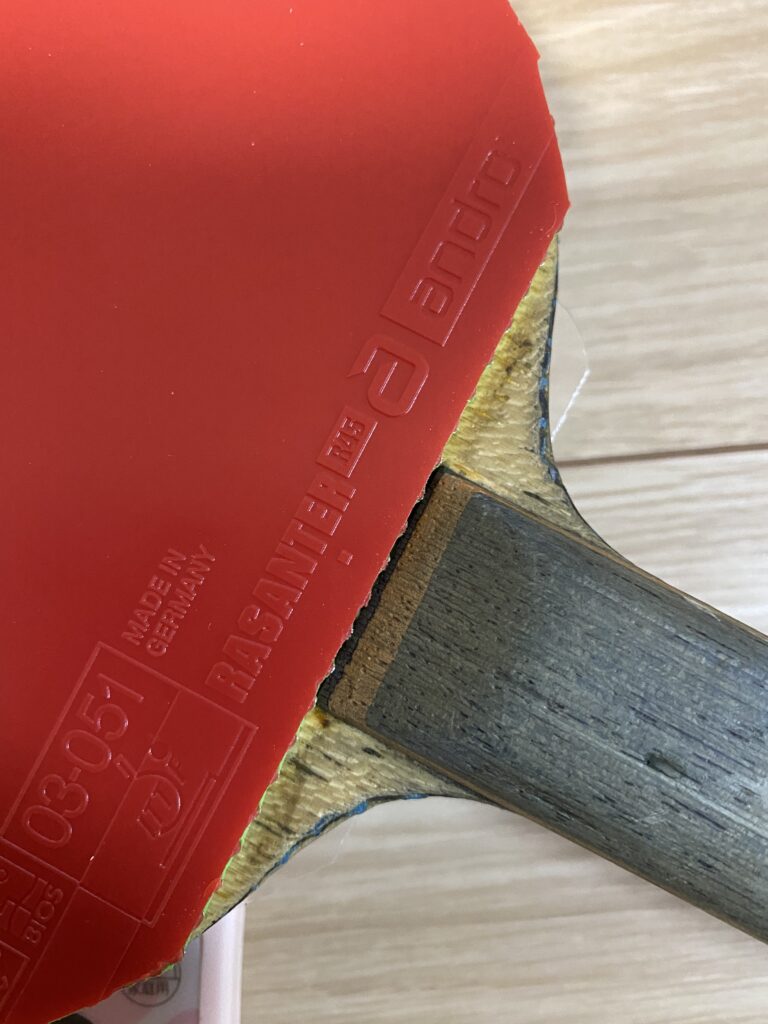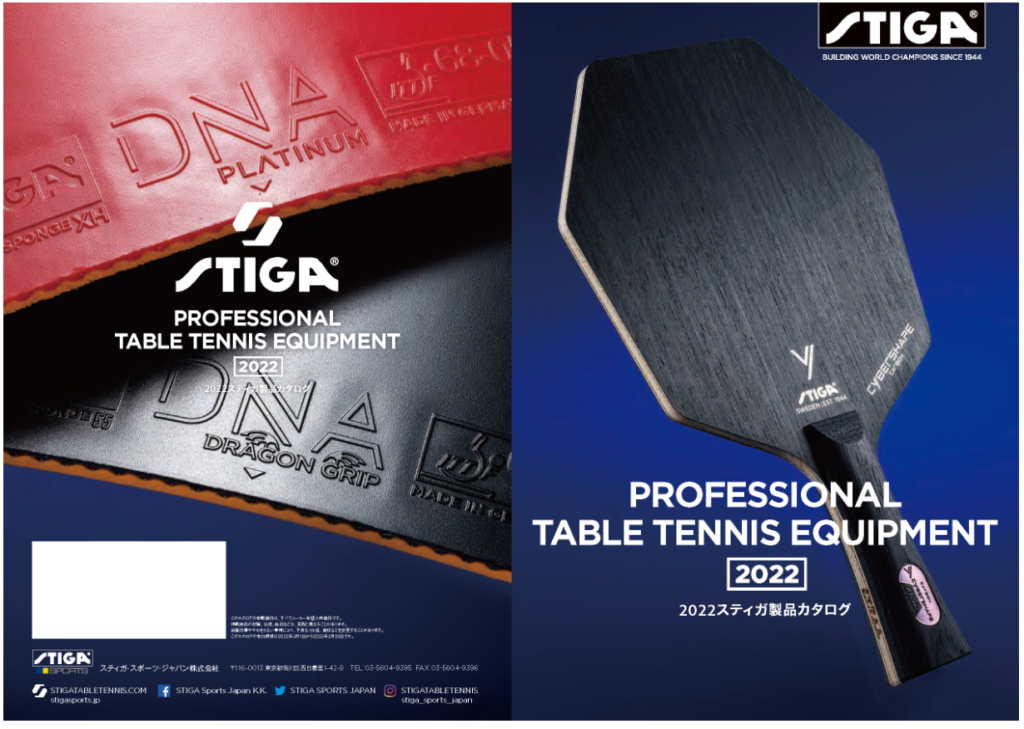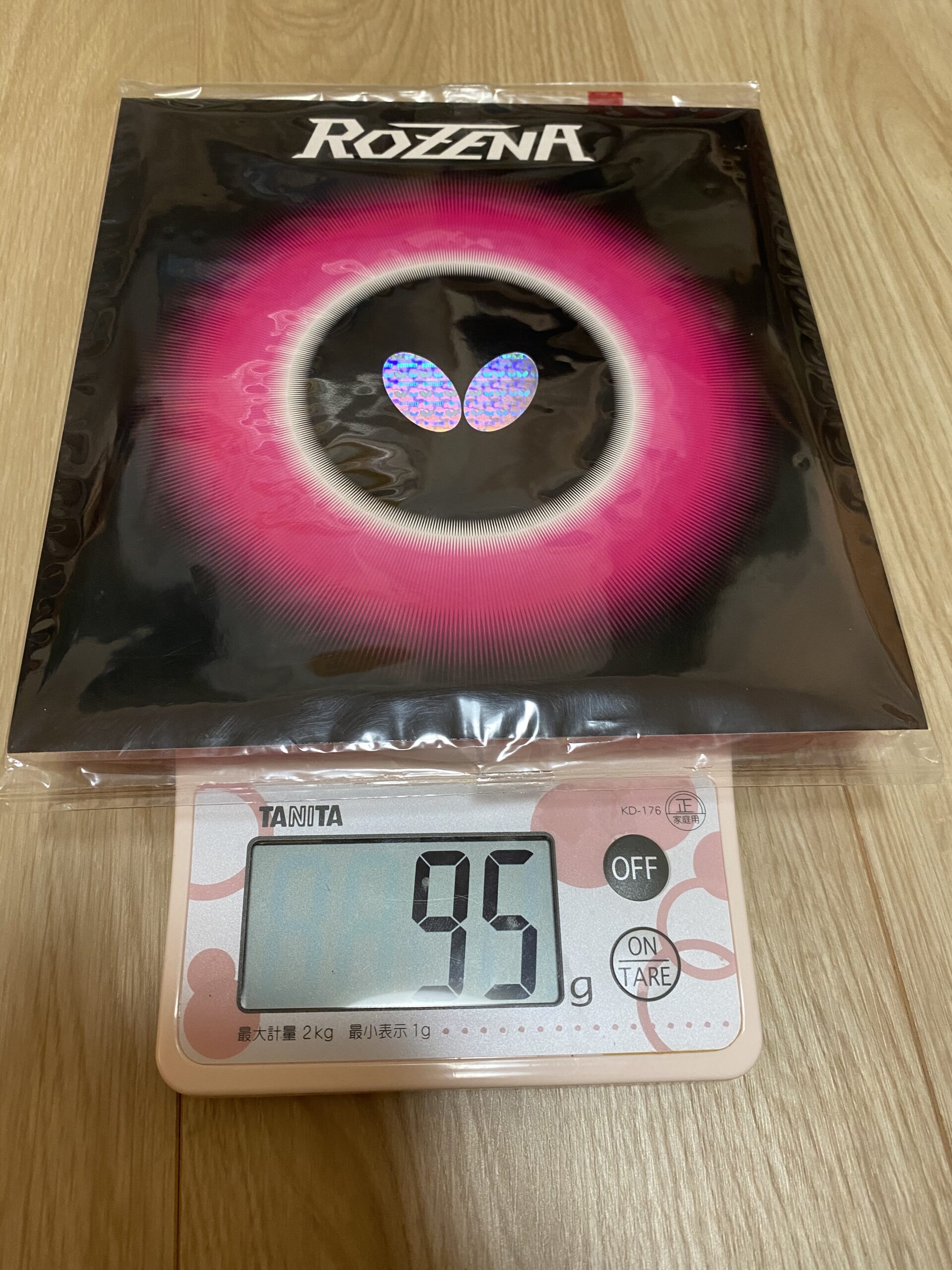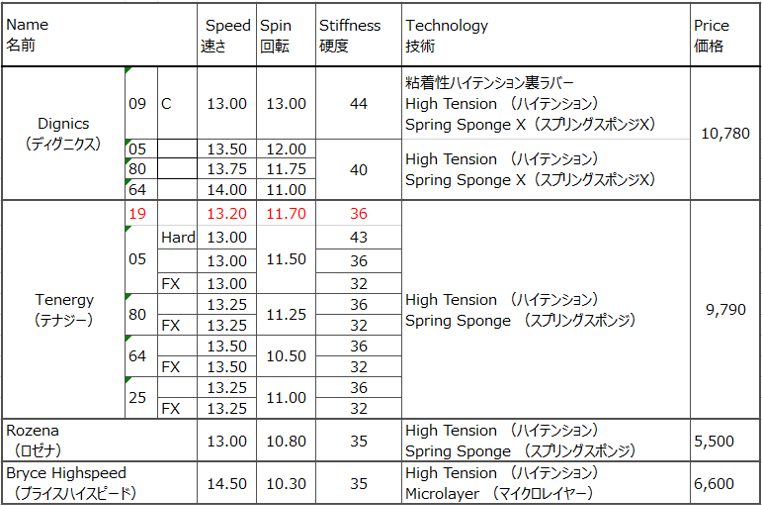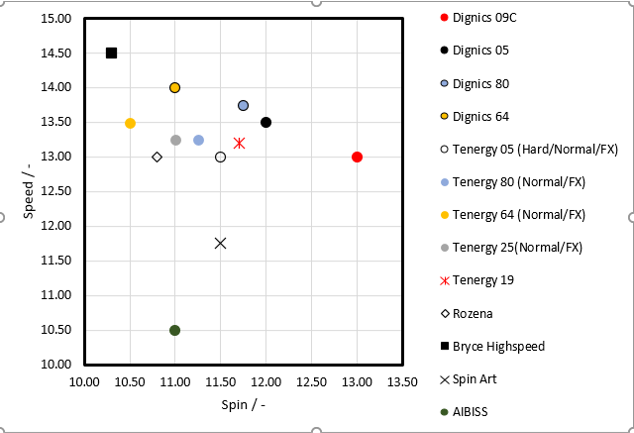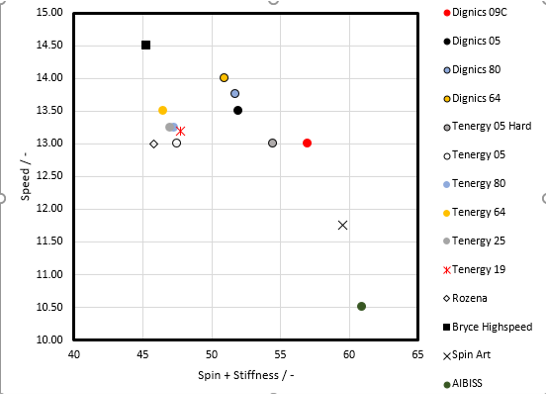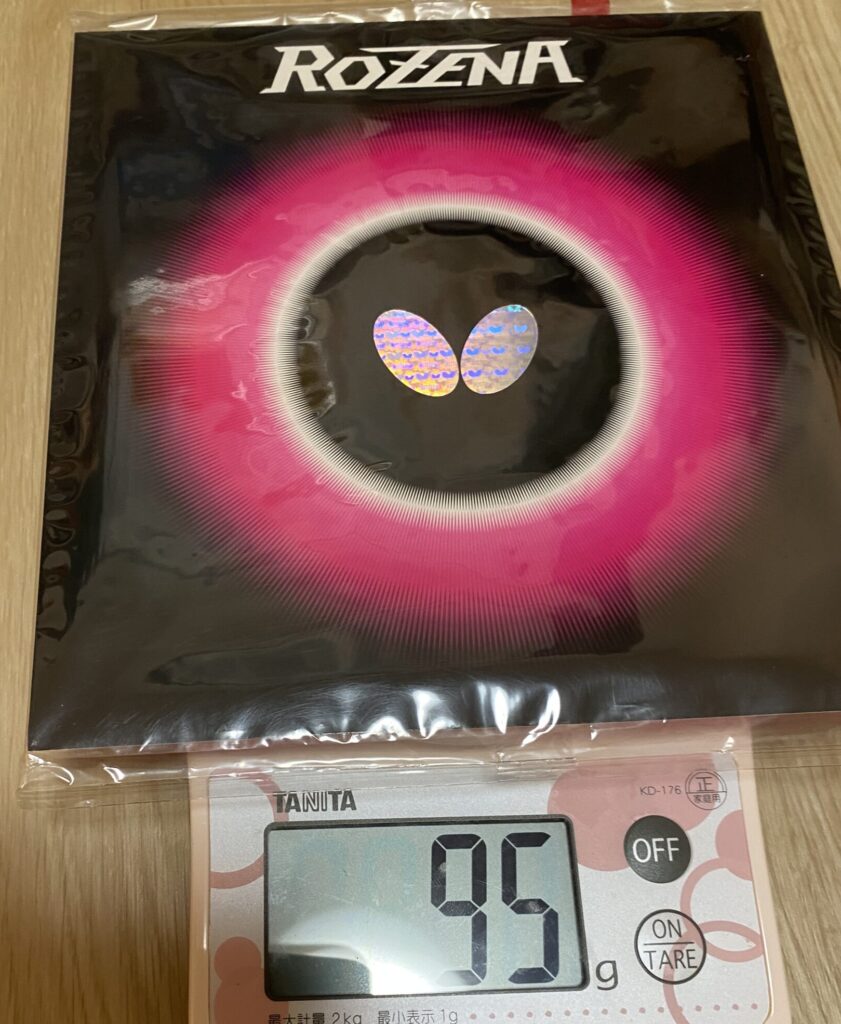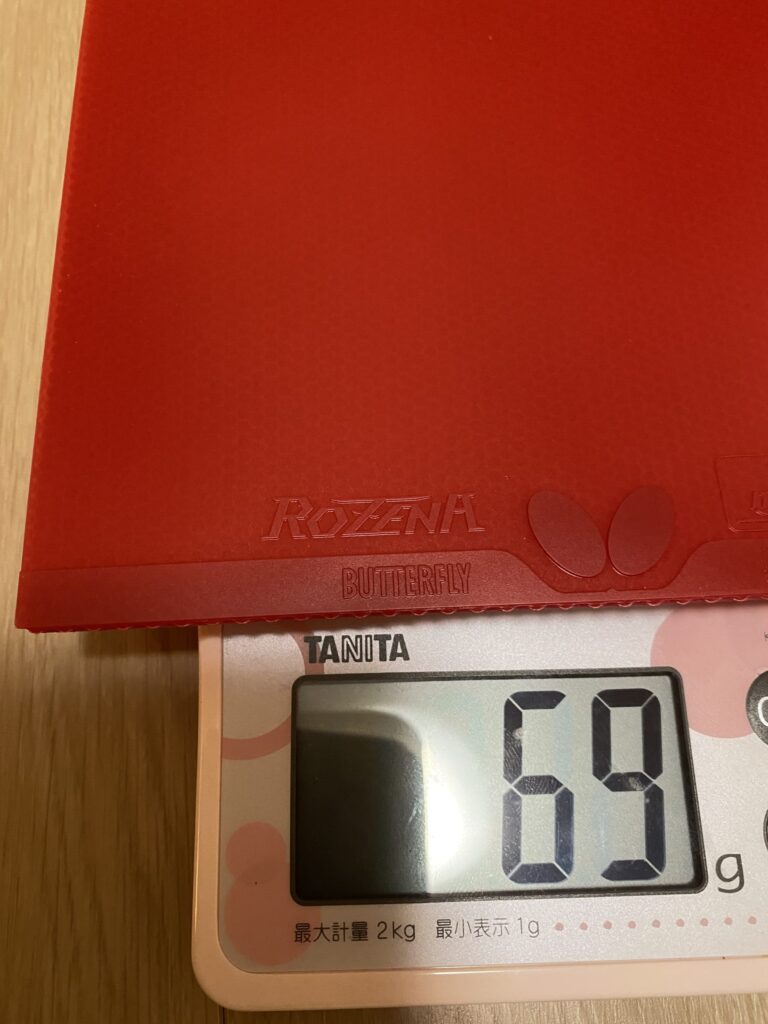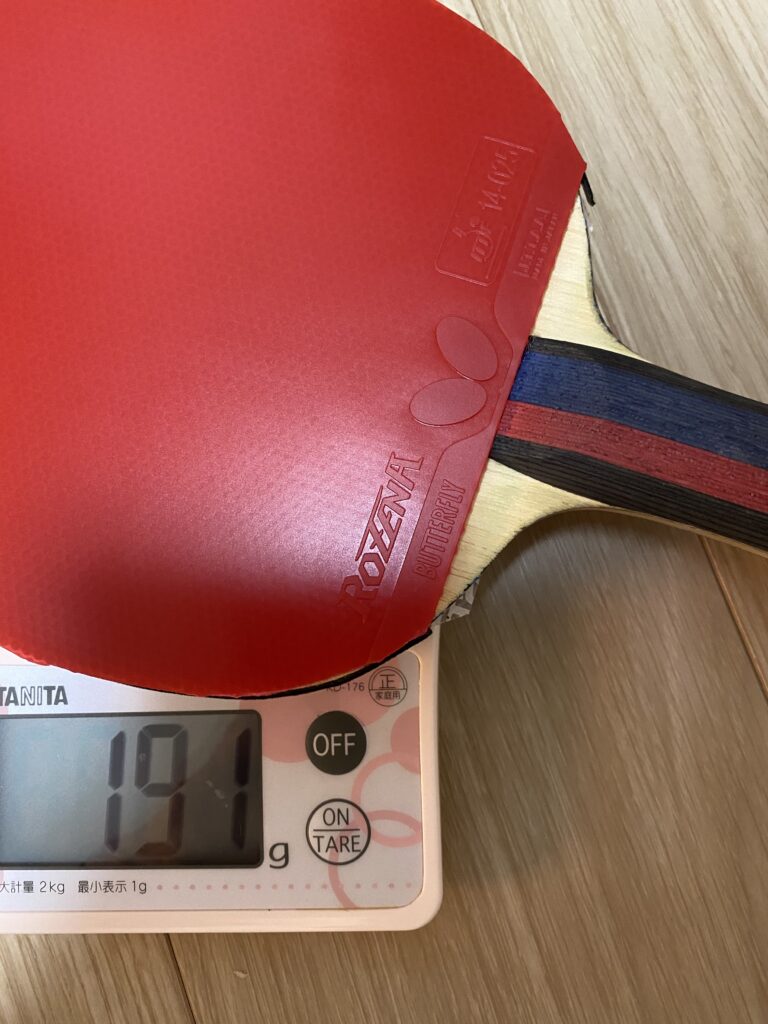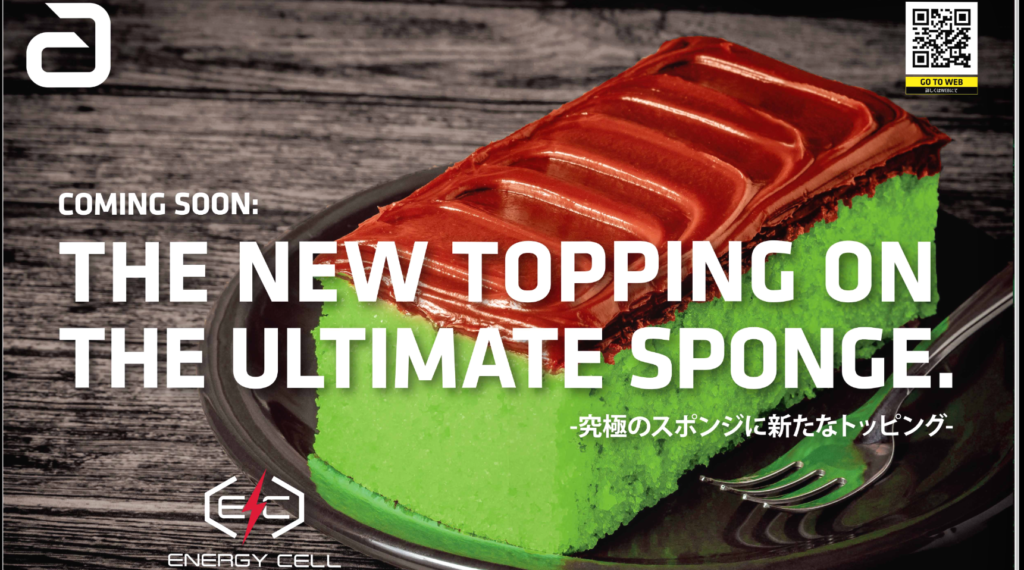Explanation
Dignics 64 is the most specialized speed performance in Butterfly’s high-end rubber series, Diginics series. The target layer of Dignics 64 is the layer that uses Tenergy 64, and it seems that the intention is to propose Dignics 64 if you want more speed and rotation.
The reason why katsuo000 paid attention to Dignics 64 is that Zhang Jike ZLC (Zhang Jike ZLC) and Dignics 64 were introduced on the Butterfly homepage as being compatible. The following is reprinted from the special page of Butterfly.
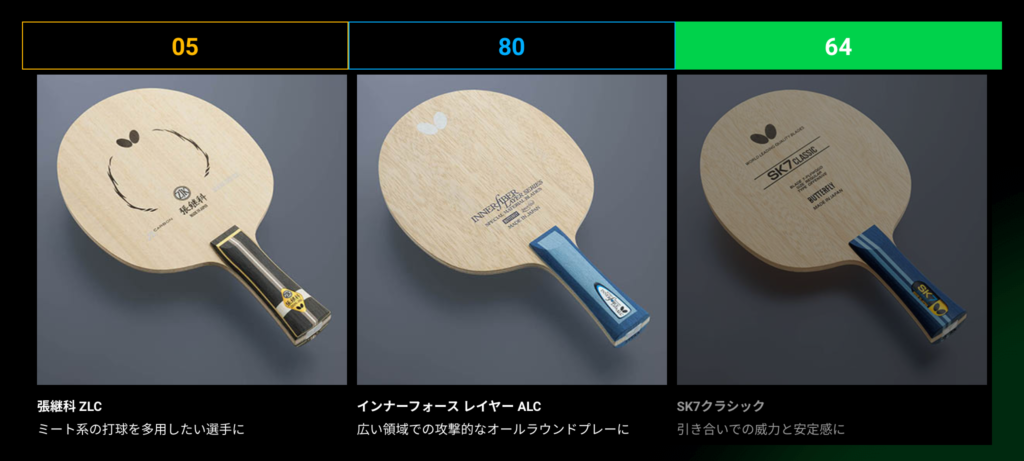
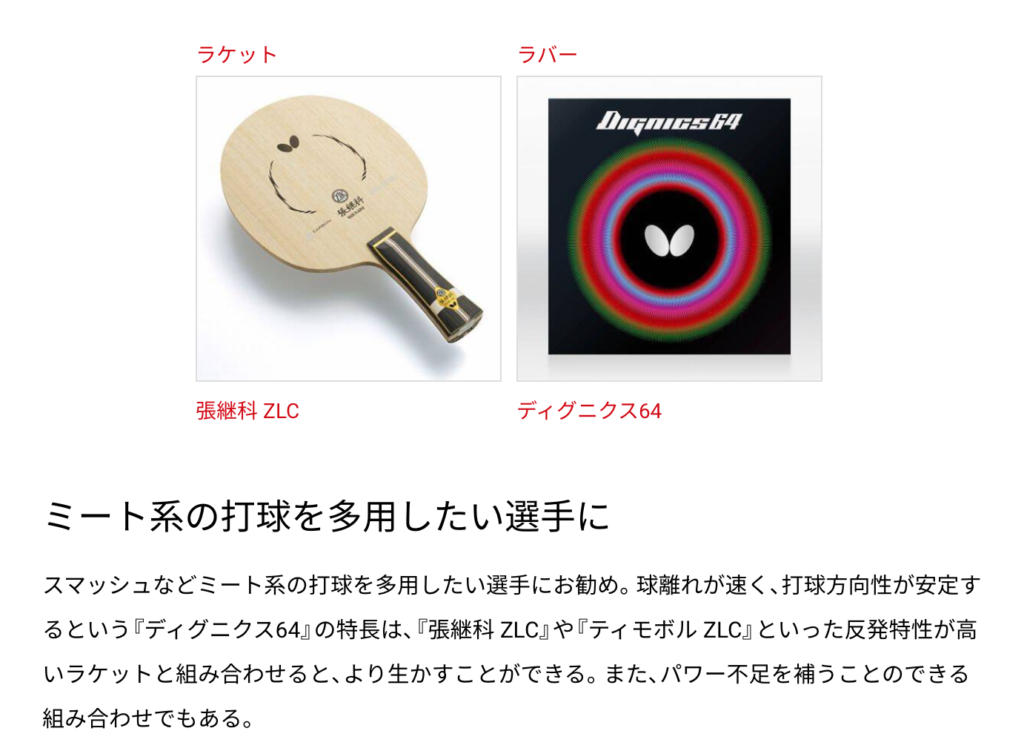
Also, katsuo000 is ashamed to never use Tenergy 64. I’ve used Bryce Highspeed, which is more specialized in speed, but I wondered if Tenergy 64 is a rubber similar to Blythe Highspeed, and I wasn’t even thinking about hitting it. .. I have repeatedly praised Dignics 05 as good on this blog, but I tried to use it to find out how it compares to other Dignics.
Comparison of published performance values

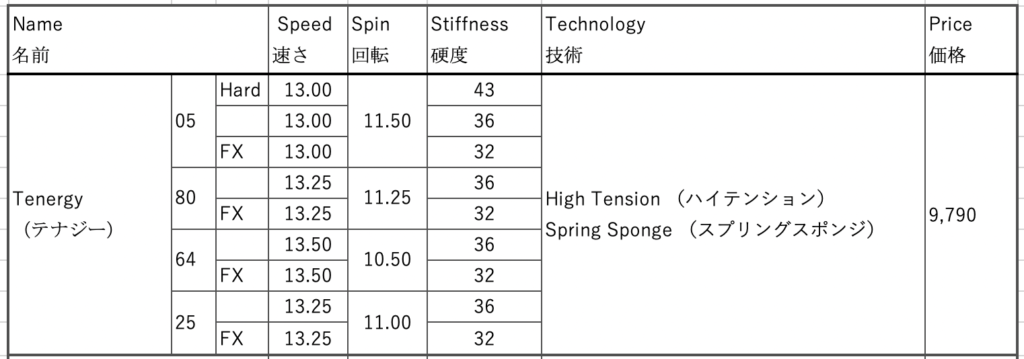
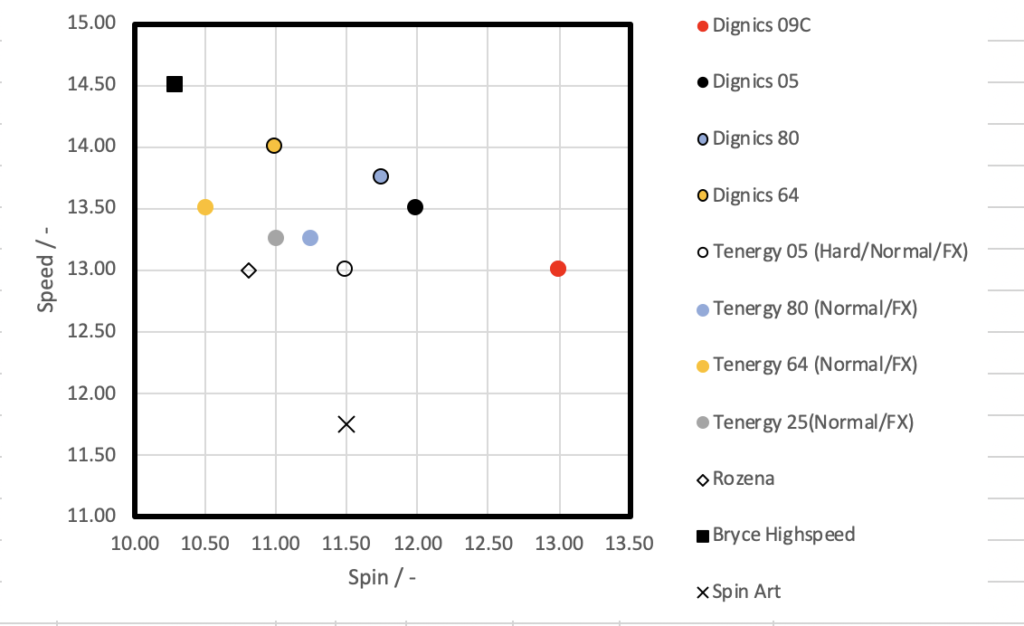
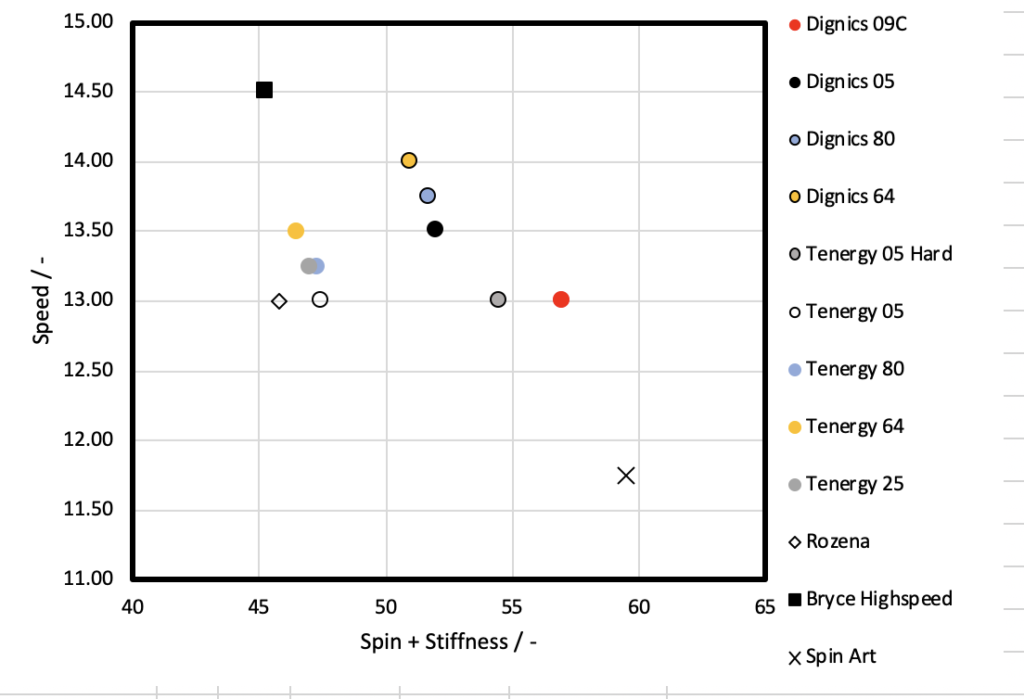
As you can see from the performance, Dignics 64 is a rubber with spin performance higher than Rozena and high speed performance next to Blythe High Speed. The speed performance is the second fastest among the butterfly rubbers after Bryce High Speed, so you can see that it is an overwhelmingly speed-based rubber.
Spring Sponge X and Dignics series seats
The Spring Sponge X used in the Dignics series is said to be an evolved version of the Spring Sponge used in the Tenergy series. The spring sponge is a closed-cell sponge, and it is a butterfly original technology that cannot be manufactured by other rubber manufacturers. Spring sponge X is made by making the closed cells of the spring sponge finer while maintaining independence. As a result, it seems that Spring Sponge X is 14% easier to deform than Spring Sponge, and the repulsive force is improved by 3%.
Speaking of the spring sponge of the Tenergy series, the orange sponge is characteristic, but the spring sponge X of the Dignics series is characterized by the red color that can be said to be crimson, and you can tell at a glance that it is the Dignics series. By the way, sponges of similar color are from other manufacturers, and they are very similar in color to the sponge of THIBAR’s Evolution series.
It is also introduced that the surface strength and ball holding have been improved. Regarding ball holding, it is introduced that the counter and Chiquita caught on the seat are more stable. In addition, although it is strong, Mizutani also mentioned that it took longer to replace the rubber. Certainly, it takes longer for the sheet to turn white than the Tenergy series, and if the storage conditions are good, the sheet will not deteriorate for nearly a year. Considering the rubber as a whole, the tension of the spring sponge X seems to loosen, so I feel that the state changes from moment to moment.
The seats of the Dignics series have a stronger transparency, but it seems that they use strong seats that are close to the cloudy seats made in Germany, so I feel that Chiquita and counters are extremely easy to do.
Dignics 64 sticking and weight
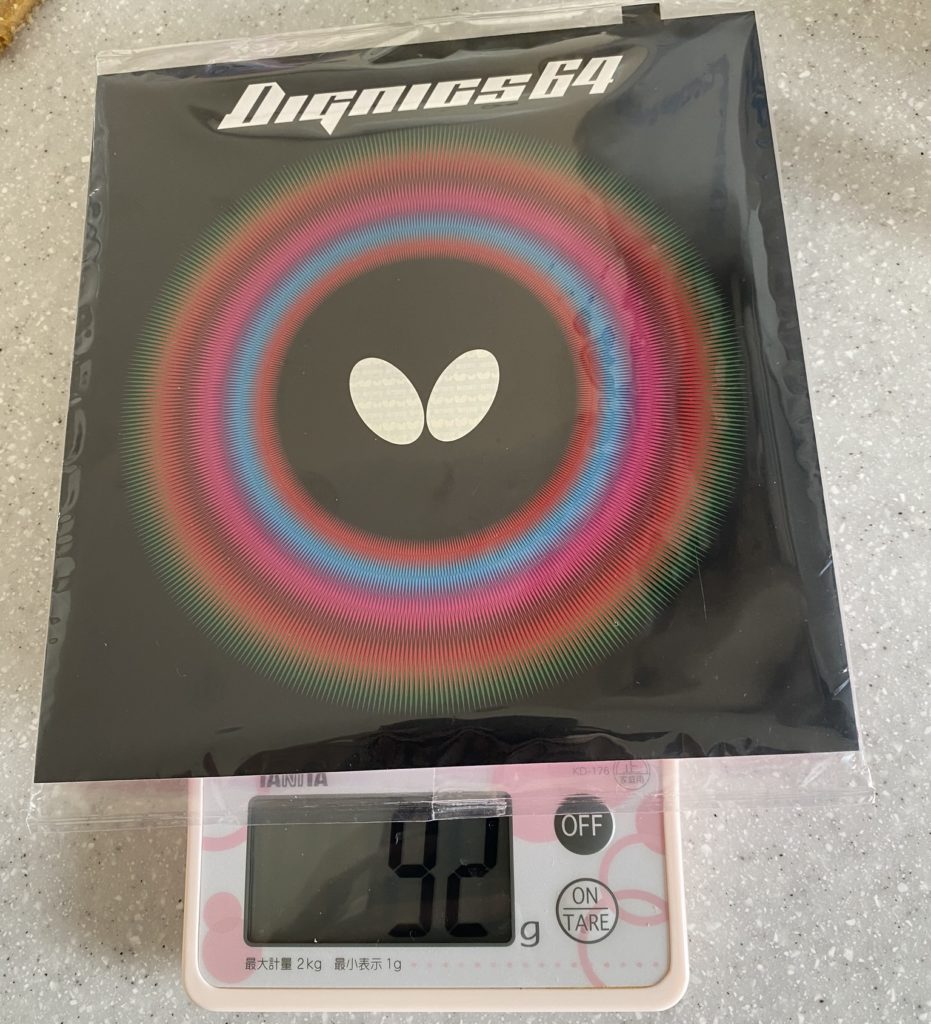
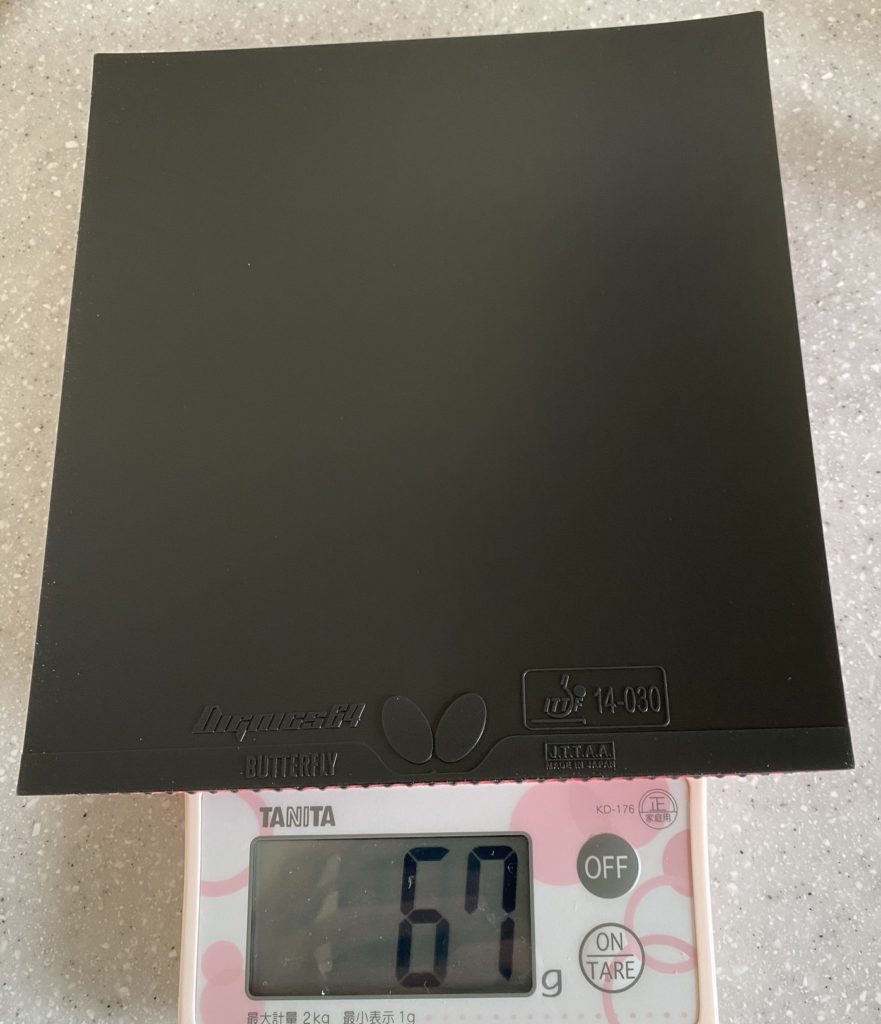

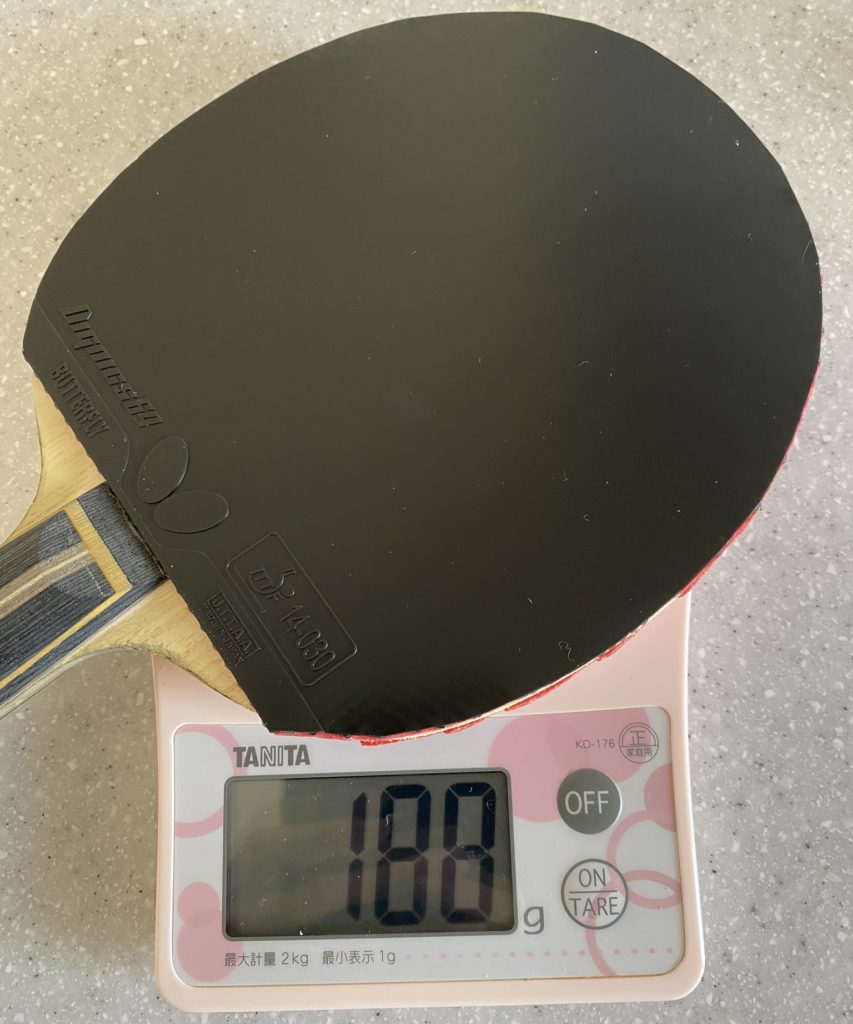
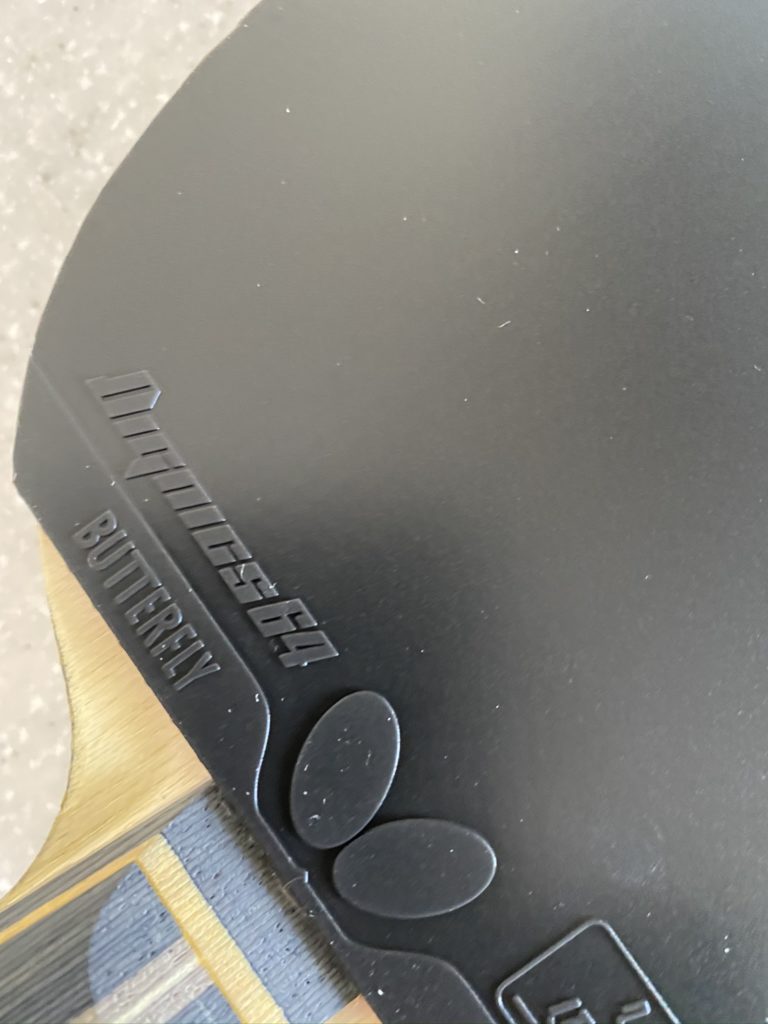
Dignics 64 High tension rubber Spring sponge X ・Sponge Thickness: Thick (1.9 mm), Extra thick (2.1 mm) ・Speed: 14 ・Spin: 11 ・Sponge stiffness: 40 ・9,800 yen + tax ・67 g (before cut) → 45 g (after cut)
It’s thick and sticks, and 45 g is light. It will be a fairly light rubber in terms of weight.
Three features of Dignics 64
The features of the Dignik series, the hardness of the hard sheet, the ease of stopping, and the ease of counter-driving are apparent!
The shot feeling was more similar to that of Dignics 05 and Dignics 80 than I imagined. Although the Dignics 64 is a rubber with a characteristic of speed, I felt that it was easy to firmly fix the push and the stop like other Dignics 05 and Dignics 80. At Blythe High Speed, of course, the speed was fast, and I felt that it was a rubber that was easy to rotate, but it was quite difficult to stop and stop. However, I felt that the Dignics 64 is one of the few rubbers that speeds up even though the push and stops can be stopped low. Like other Dignics, it was a very reliable rubber that could firmly fix push and Stop.
In addition, the ease of counter drive, which has been acclaimed repeatedly in the Dignics series, was alive and well. It is not easily affected by the rotation of the other party. Dignics 09C may be different, but I think that Dignics 05, 80, 64 use the same sponge and the same material sheet, and the only difference is the grain shape of the sheet. Therefore, I thought that Digg 05, 80, 64, which use the same sheet material and the same sponge, have similar characteristics that appear from the sheet and sponge. I feel that the grain shape changes the shot feeling, especially the shot feeling when biting into it. Digg’s 05, 80, 64 may be quite close if the ball does not bite into the sponge. I think that the only counter drive is to bite into the sponge, but the ease of doing my counter drive seems to be whether the seat is hard or the seat is easily affected by rotation, so it is hard. I felt that the Dignics sheet, which is not easily affected by rotation, is easy to do. In other words, Dignics 64 was easy to counter drive.
The easiest to handle in the Dignics series! Hard to feel the hardness!
Although it is the content that the contract player of Butterfly is transmitted, Dignics 64 had a better bite than other Dignics. Therefore, I felt that Dignics 64 was clearly easier to handle than other Dignics. Especially meet, block and speed drive were very easy to do. In Dignics 05, the ball often falls due to insufficient impact, and you may make a mistake due to the hardness of the rubber before holding the ball. katsuo000 is conscious of the trunk to make up for the difficulty of Dignics 05, and is conscious of shaking by the rotation of the waist instead of shaking only by hand, but the fore and back are turned back by that amount. It’s easy to be late, but with Dignics 64, I could use it without worrying about it.
The fastest ball separation and fastest pitch in Dignics!
Dignics 09C is an adhesive rubber, and Dignics 05 is also a rubber that makes you feel the ball holding very much, so I felt that the ball release was slow. The slower the ball is released, the easier it is to spin and control, but the pitch is only a small difference, but it slows down. On the other hand, Dignics 64 was faster than any other Dignics! Therefore, if you feel the benefit of putting pressure on your opponent at the speed of leaving the ball, you should definitely recommend Dignics 64.
Each technics
Fore hand
Light hit
I didn’t feel any difference from other Dignics. However, I felt that I didn’t feel the tension of the rubber when I put it on.
Drive on long balls and rallies
It was very easy to speed drive and was straight. Even with Dignics 05, it is easy to hit a straight speed drive, but Dignics 64 was more stable.
Drive with open face
I felt that the ball was released a little faster. It may not be very suitable.
Top spin (loop) drive against back spin
It’s not difficult to do, but I felt that the amount of rotation was a little unsatisfactory.
Speed drive against back spin
I was a little worried about over mistakes, but I think it’s an arm problem.
Block
It was easy to do. It will be difficult to rotate.
Counter drive
Counter drive was good.
Stop / push
It settled low. After all the amount of rotation is a little small.
Fore flick
It was easy to do. It’s softer than Dignics 05, so I felt like I could grip it firmly and hit it.
Back hand
Light hit
I felt the speed of leaving the ball a little. I also want to grip the back and hit it, and I also felt that it was a little difficult to do because I used outer carbon.
Drive on long balls and rallies
It’s not bad, but the flight distance is quite long, so I just wanted to speed drive and I got a lot of unreasonable hits.
Top spin (loop) drive against back spin
I made a few net mistakes, but I didn’t think it would be difficult.
Speed drive against back spin
I made a lot of mistakes due to my lack of skill, but it’s easy to do.
Curve / shoot drive
Chiquita was more powerful in the speed type.
Block
It was easy to do.
Counter drive
I’m not good at it, but I feel that I can do it if I practice.
Stop / push
It was easy to do, but the amount of rotation is small.
Chiquita
It was easy to do. Dignics 05 is hard and the arc line is too high, so it is difficult to feel, but I think that some people may find Dignics 64 easier to do.
Comparison with other rubbers (personal impressions)
Spin amount
Tenergy 05 > Dignic 64 ≧ Bryce Highspeed > Blue Storm Z1 Turbo
Speed
Bryce Highspeed > Dignics 64 ≧ Dignics 80 > Dignics 05







